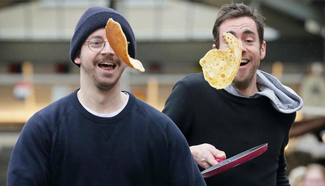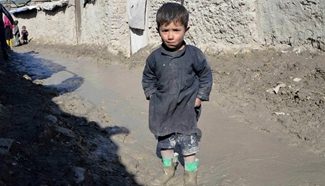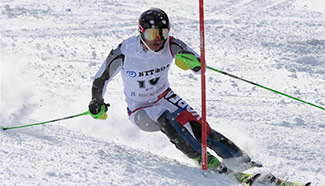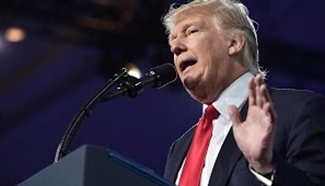SAN FRANCISCO, Feb. 25 (Xinhua) -- Two researchers, one in the United States and the other in Germany, claim they have found a better way to predict what personality traits might indicate a kid is at risk for drug or alcohol abuse.
The finding, reported this week in Nature Communications by Brian Knutson, a professor of psychology at Stanford University, and Christian Buchel, a professor of medicine at Universitatsklinikum Hamburg Eppendorf, was based on a brain scan dataset covering, among other things, 144 European adolescents who scored high on a test of what's called novelty seeking.
Novelty seeking isn't inherently bad, Knutson noted. On a good day, the urge to take a risk on something new can drive innovation. On a bad day, however, it can lead people to drive recklessly, jump off cliffs and ingest whatever someone hands out at a party. And psychologists know that kids who score high on tests of novelty seeking are on average a bit more likely to abuse drugs.
The pair of researchers were out to work on the question: could there be a better test, one both more precise and more individualized, that could tell whether novelty seeking might turn into something more destructive?
They suspected that a brain-scanning test called the Monetary Incentive Delay Task, or MID, could be the answer.
Knutson had developed MID as a way of targeting a part of the brain now known to play a role in mentally processing rewards like money or the high of a drug. During the test, participants lie down in a magnetic resonance imaging (MRI) brain scanner to play a simple video game for points, which they can eventually convert to money. At the start of each round, each player gets a cue about how many points he stands to win during the round. It's at that point that players start to anticipate future rewards. For most people, that anticipation alone is enough to kick the brain's reward centers into gear.
Kids' brains in general respond less when anticipating rewards, compared with adults' brains. But that effect is even more pronounced when those kids use drugs, which suggests one of two things: either drugs suppress brain activity, or the suppressed brain activity somehow leads youths to take drugs.
If it's the latter, according to the researchers, then the test could predict future drug use. To support this assumption, they need to measure brain activity in non-drug-using adolescents and compare it to eventual drug use.
Making the comparison possible was that Buchel and colleagues in Europe had already collected data on around 1,000 14-year-olds as they went through MID and had also followed up with each of them two years later to find out if they'd become problem drug users, for example, if they smoked or drank on a daily basis or ever used harder drugs like heroin.
Knutson and Büchel then focused their attention on 144 adolescents who hadn't developed drug problems by age 14 but had scored in the top 25 percent on a test of novelty seeking.
Analyzing that data, the two found they could correctly predict whether youngsters would go on to abuse drugs about two-thirds of the time based on how their brains responded to anticipating rewards.
This is a substantial improvement over behavioral and personality measures, which correctly distinguished future drug abusers from other novelty-seeking 14-year-olds about 55 percent of the time, only a little better than chance.
"This is just a first step toward something more useful," Knutson was quoted as saying in a news release from Stanford. "Ultimately the goal -- and maybe this is pie in the sky -- is to do clinical diagnosis on individual patients" in the hope that doctors could stop drug abuse before it starts. Enditem












